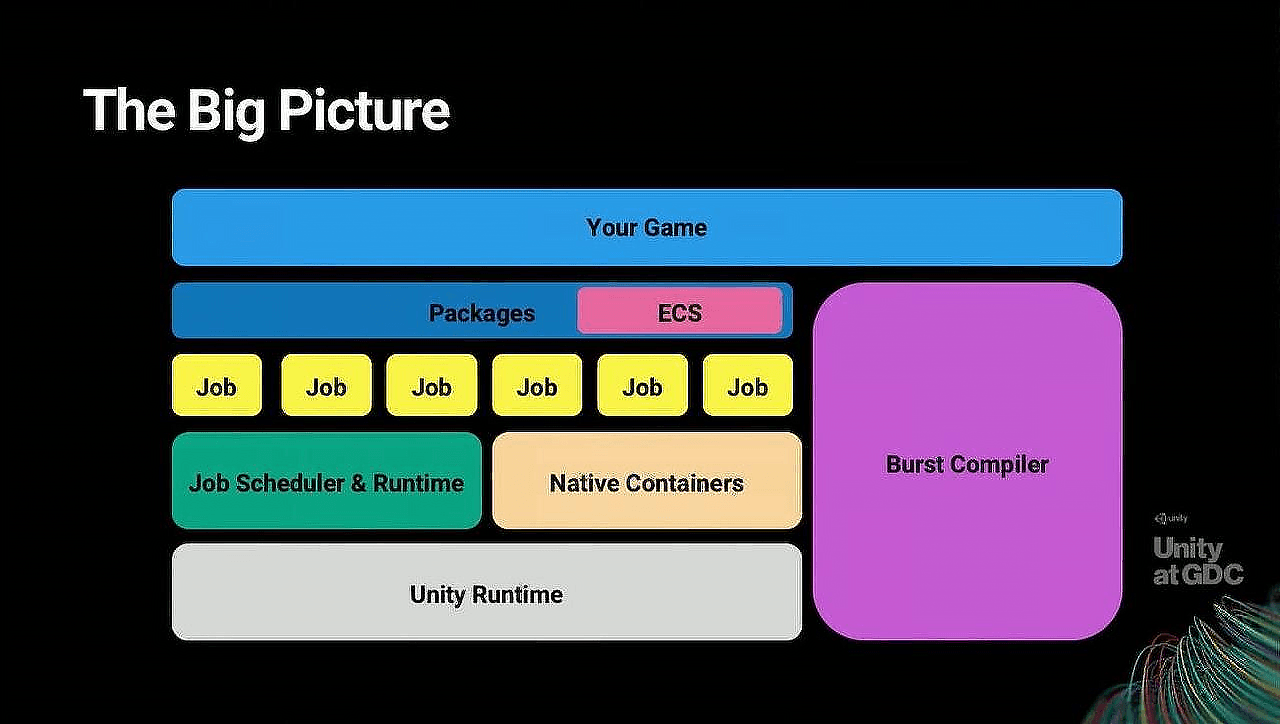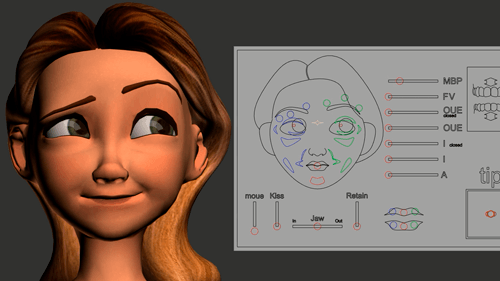Unity Technologies, known for its trailblazing Unity game engine, introduced the Unity DOTS system to the public through an enlightening blog post in early 2019. By March of the same year, the full spectrum of this system was displayed at the Game Developers Conference (GDC), capturing the attention of game developers and industry observers alike. Unity Technologies has cemented its reputation as a leader in game development tools, offering the Unity game engine as a foundational platform for creating interactive and engaging digital experiences.
The Unity DOTS system represents a significant leap forward in game development technology. By incorporating the Unity DOTS, Unity Technologies provides developers with a robust framework to optimize game performance through advanced data-oriented technology. Such an approach allows for improved scalability and efficiency, particularly in projects that demand high levels of detail and complexity.
Unity's dedication to innovation is evident in the development and refinement of the Unity DOTS system. This initiative reflects Unity Technologies' commitment to supporting developers in overcoming technical challenges and achieving their creative visions. The Unity game engine, enhanced by the capabilities of the DOTS framework, enables the creation of games that look visually impressive and run seamlessly across a wide range of devices.
With the introduction of the Unity DOTS and Unity DOTS system, Unity Technologies reinforces its role as an indispensable partner to game developers. The Unity game engine, renowned for its adaptability and power, is further enriched by these advancements, setting a new standard for what is possible in game development. In this article, our Unity game development studio shares insights on how you can take advantage of the DOTS system.
What is DOTS?
Data-Oriented Technology Stack, succinctly known as DOTS, heralds a transformative approach to game development within the Unity engine framework. This system introduces substantial refinements over the conventional methodologies previously employed. With a global community of developers relying on Unity to create diverse gaming experiences, the advent of DOTS has sparked a wave of anticipation and inquiry. The implications of DOTS for game creation are profound, offering a lens into a future where efficiency and performance in game engines are paramount.
Unity's introduction of the DOTS framework signifies a pivotal shift toward optimizing computational tasks and rendering processes, enabling developers to craft games that are not only visually stunning but also remarkably efficient. The Unity DOTS system is engineered to maximize the utilization of modern hardware, allowing for a significant increase in performance and scalability. By focusing on data-oriented design, Unity empowers developers to push the boundaries of what is technically feasible, facilitating the creation of complex, rich gaming environments that were previously challenging to achieve.
As the Unity DOTS becomes increasingly integrated into the workflows of game developers, it prompts a reevaluation of existing development practices. The system's emphasis on data optimization and performance enhancement aligns with Unity's commitment to providing developers with cutting-edge tools. With Unity DOTS, the engine's capabilities are expanded, offering a robust platform for developers to explore new dimensions of game design and interactivity.
The conversation surrounding Unity DOTS and its impact on game development is ongoing, reflecting the system's significance and potential to redefine how games are made. For those crafting games with Unity, understanding the nuances and advantages of the Unity DOTS system becomes crucial. It represents an opportunity to elevate game development to new heights of efficiency and creativity.
Unity Technologies' ongoing development and support for the Unity DOTS underscore the company's dedication to innovation and its role in shaping the future of game development. As developers worldwide continue to explore the possibilities enabled by DOTS, Unity stands at the forefront of this technological evolution, offering a system that is not only advanced but also transformative in game design and execution.
Unity DOTS performance presented by Unity
Key Features of DOTS

Unity Technologies has designed the DOTS system with the primary goal of enhancing developers' software development lifecycle. This initiative aims to streamline workflows and maximize the computational efficiency of modern multi-core processors. DOTS introduces a suite of distinct features and characteristics, each meticulously crafted to elevate the development process.
The core of the Unity DOTS system lies in its ability to significantly simplify complex development tasks, allowing game creators to focus more on the creative aspects of game design. Unity's approach with DOTS is to provide a scalable architecture that leverages the capabilities of advanced processors, thereby facilitating smoother and more dynamic game experiences. This system stands as a testament to Unity's commitment to equipping developers with the tools necessary to exploit the full spectrum of hardware performance.
With the deployment of Unity DOTS, developers have reported a noticeable enhancement in the efficiency of their development processes. The system's architecture is built to optimize data management and processing tasks, ensuring that games run at peak performance without compromising on visual quality or gameplay complexity. Unity Technologies has positioned the Unity DOTS as a cornerstone in the evolution of game development, aiming to set a new benchmark for what is achievable within the Unity engine ecosystem.
Unity DOTS offers a forward-thinking solution that aligns with the demands of contemporary game development. It embodies Unity's vision of a future where developers can seamlessly translate their most ambitious ideas into reality, supported by a system that emphasizes efficiency, performance, and scalability. By integrating Unity DOTS into their projects, developers gain access to a powerful framework designed to harness the advanced features of modern hardware.
The Unity DOTS system's innovative characteristics are indicative of Unity Technologies' proactive stance on adapting to and leading technological advancements in game development. As Unity continues to refine and expand the capabilities of DOTS, the Unity engine becomes an increasingly potent platform for developers seeking to push the boundaries of interactive entertainment. Unity's dedication to this cause is evident in its continuous efforts to provide a system that not only meets the current needs of developers but also anticipates the challenges and opportunities of future game development scenarios.
Switch to Data-Oriented Programming
The transformative essence of the Unity DOTS system is embedded in its very name, signaling a strategic pivot to Data-Oriented Technology as opposed to the traditional object-oriented frameworks that have dominated game development. An in-depth examination of these contrasting paradigms reveals each approach's core differences and advantages.
Object-oriented programming (OOP) constructs the foundation of game development by emphasizing objects that encapsulate their own data and behaviors, offering a structured and intuitive coding environment. This method, prevalent among developers, supports a cleaner, more organized codebase with logically defined relationships between objects.
However, despite its widespread adoption and the clarity it brings to software development, OOP faces challenges, particularly in the realm of parallel computing. The object-oriented model's emphasis on discrete objects can complicate the execution of tasks across multiple processor cores efficiently. This limitation can lead to performance bottlenecks, particularly in resource-intensive applications like games, where seamless performance is crucial.
Conversely, Data-Oriented Programming (DOP), the foundation of the Unity DOTS framework, shifts the focus from objects to the data they contain. By organizing data into homogeneous groups, DOP facilitates the simultaneous processing of related data points, enhancing computational efficiency and reducing the overhead associated with accessing and modifying data spread across different objects.
The transition from an OOP to a DOP model, as exemplified by Unity DOTS, leverages the full potential of multi-core processors, optimizing data access and manipulation for faster execution times. This shift not only improves the game's performance through more efficient use of hardware but also significantly enhances the effectiveness of cache utilization. Such an approach allows game developers to craft experiences that are more complex and dynamic, without compromising on performance.
Unity Technologies' adoption of the Unity DOTS system underscores a commitment to providing developers with advanced tools that align with modern hardware capabilities. By integrating the Unity DOTS into their development processes, creators can overcome traditional barriers associated with object-oriented programming, enabling a more fluid and efficient workflow. The Unity engine, enhanced with the Unity DOTS, becomes an even more powerful platform for developers aiming to push the boundaries of what is possible in game design.
Furthermore, the Unity DOTS system illustrates Unity's foresight in adapting to technological advancements, ensuring that games developed on its platform can fully capitalize on the hardware they run on. As Unity continues to refine and expand the DOTS framework, it solidifies its position as a leader in the game development industry, offering a system that not only addresses the current demands of developers but also anticipates the evolving landscape of game technology.
The C# Job System
The introduction of the C# Job System within the Unity framework several years ago marked a significant milestone in optimizing game development workflows. However, the advent of the Data-Oriented Technology Stack, or DOTS, heralds further refinements to this system. At its core, the Unity DOTS model enhances the utilization of computer resources, particularly benefiting systems equipped with multiple processing cores. This is achieved by granting access to the native job system, originally running on C++, thereby enabling C# system programming scripts to execute tasks concurrently. In the intricate architecture of this system, a "job" represents a discrete unit of work designated for execution.
Unity's job system organizes pending jobs into a structured queue. It then dynamically allocates worker threads to process these jobs. This allocation strategy spreads the computational load across multiple cores, allowing for simultaneous execution of tasks — a method known as multithreading. Multithreading, while a widely adopted technique in software development for its efficiency in processing multiple operations concurrently, is not without its challenges. One notable concern is the potential for race conditions, a scenario where concurrent threads attempt to modify the same data simultaneously, leading to unpredictable outcomes.
To address these and other complexities inherent in multithreaded execution, Unity's enhanced C# Job System incorporates robust safeguards. These protective measures are designed to prevent race conditions, ensuring that data integrity is maintained across concurrent operations. Additionally, the system offers protection against several other pitfalls commonly encountered in multithreaded environments. This level of safety and efficiency in handling parallel tasks within game development and other multithreaded applications underscores the Unity DOTS system's sophistication.
The integration of Unity DOTS, with its emphasis on data-oriented design and parallel execution capabilities, significantly augments Unity's ability to leverage multi-core processors efficiently. By facilitating a more effective distribution of workloads across available cores, Unity DOTS ensures that developers can achieve higher performance levels and more responsive game experiences. The Unity DOTS system, with its advanced job scheduling and execution framework, represents Unity's commitment to providing developers with cutting-edge tools that optimize the development process.
Unity's persistent innovation in the development of the Unity DOTS and the C# Job System exemplifies the platform's dedication to harnessing the full potential of modern hardware architectures. As Unity continues to refine these systems, it empowers developers with the means to create complex, high-performance games that are both scalable and efficient. The Unity engine, enriched by the capabilities of DOTS and the advanced job system, sets a new industry standard for what is achievable in game development, offering a glimpse into the future of interactive digital experiences.
The Unity ECS (Entity Component System)
Unity Technologies has revamped its development tools, integrating the Unity Entity Component System (ECS) following the principles set by DOTS. ECS organizes game or program elements into three distinct categories: entities, components, and systems. Entities are individual items in a game or program, serving to group data pieces. Components represent the game's or program's data, which entities collect and index. Systems are responsible for altering data from one state to another, embodying the transformation logic.
With the shift toward Data-oriented programming, ECS has seen significant changes, particularly in data layout. These changes have led to enhanced memory optimization, faster load times, and more efficient data serialization within the ECS process. This updated system simplifies code reuse and expansion by others.
The ECS design, now working alongside the C# Job System and Burst Compiler, leverages multi-core processors' full capabilities, streamlining the design process. While "ECS" might be confused with Unity ECM (Enterprise Content Management) by those new to the term, the two are distinctly different concepts. Unity provides extensive ECS documentation, including Unity3D ECS documentation, on its website, offering resources on entity programming and the entity system framework.
The Unity Burst Compiler
The Unity Burst Compiler represents a significant advancement in transforming source code into executable machine code, a process fundamental to software development. By converting IL/.NET code into native code utilizing LLVM technology, the Burst Compiler by Unity stands out for its efficiency and effectiveness. This conversion is not merely a translation but an optimization process that leverages the integration of C# jobs into the native job system. The outcome is a form of machine code that is highly optimized and significantly reduces the burden on developers, minimizing the need for manually writing extensive amounts of code or relying on generic compiler data systems.
One of the standout features of the new Burst Compiler is its capacity to harness the full potential of the Unity DOTS system, enabling developers to create finely tuned applications for various platforms' capabilities. This optimization is not limited to performance enhancements but extends to how applications leverage platform-specific features, ensuring that the compiled code runs efficiently across different hardware configurations. The compatibility of the Burst Compiler with a data-object-oriented repository system, standard ECS databases, and the various system components utilized in DOTS exemplify Unity's commitment to providing a comprehensive ecosystem for game development.
Integrating the Unity Burst Compiler within the Unity ecosystem facilitates a seamless development experience, allowing for the creation of highly optimized applications. This compiler is particularly beneficial when used in conjunction with the Unity DOTS system, as it amplifies the efficiency of data processing and execution within the Unity engine. By doing so, Unity not only simplifies the development process but also ensures that applications can achieve maximum performance, a critical factor in the success of any software in today's technology-driven landscape.
Furthermore, the Unity Burst Compiler's ability to work in harmony with Unity DOTS, the Unity DOTS system, and the overarching Unity platform showcases a unified approach to software development. This synergy enhances the Unity engine's capability to handle complex computations and large datasets, common in game development and other high-performance computing tasks. As a result, developers leveraging the Unity platform have at their disposal a powerful set of tools that streamline the creation process and elevate the quality of the final product.
Unity's investment in technologies like the Unity Burst Compiler and the Unity DOTS system underscores the company's dedication to innovation and its role in shaping the future of game development. By providing developers with advanced tools that optimize code for various platforms, Unity ensures that games and applications meet and exceed users' expectations, regardless of their hardware. This commitment to excellence and performance optimization sets Unity apart as a leader in developing interactive content.
Getting started on a Unity project

Have you got an idea or concept that you would like to bring to life with the Unity engine? If so, you are not alone. Every year, thousands of games and programs for different programs enter development, but not all of them see the light of day. Most Unity projects require a dedicated team of skilled specialists coupled with much time and resources. Since the DOTS system and related data oriented architecture only exist in preview mode at the moment, you are free to develop your project with a classic Unity build, and this may require the help of a development company.
As a custom game development company, Game-Ace has a rich history of professional game development. We have worked with market leaders and franchises, developed hundreds of completed projects. Unity-based development is one of our strengths, and we have dozens of talented specialists that are ready to help with your project, whether it is a particular stage of development or a full cycle (from start to finish). If this is something that interests you, feel free to reach out to us for an estimate on what it will require and other details.
 Game-Ace’s 2025 Year in Review: Key Achievements and Highlights
Game-Ace’s 2025 Year in Review: Key Achievements and Highlights  Game-Ace’s 2024 Year in Review:
Game-Ace’s 2024 Year in Review: Unity 6: Revolutionizing Game Development for the Next Generation
Unity 6: Revolutionizing Game Development for the Next Generation  Game-Ace Gears Up to Participate at Gamescom 2024
Game-Ace Gears Up to Participate at Gamescom 2024  Game-Ace Participated in Nordic Game 2024
Game-Ace Participated in Nordic Game 2024 


































